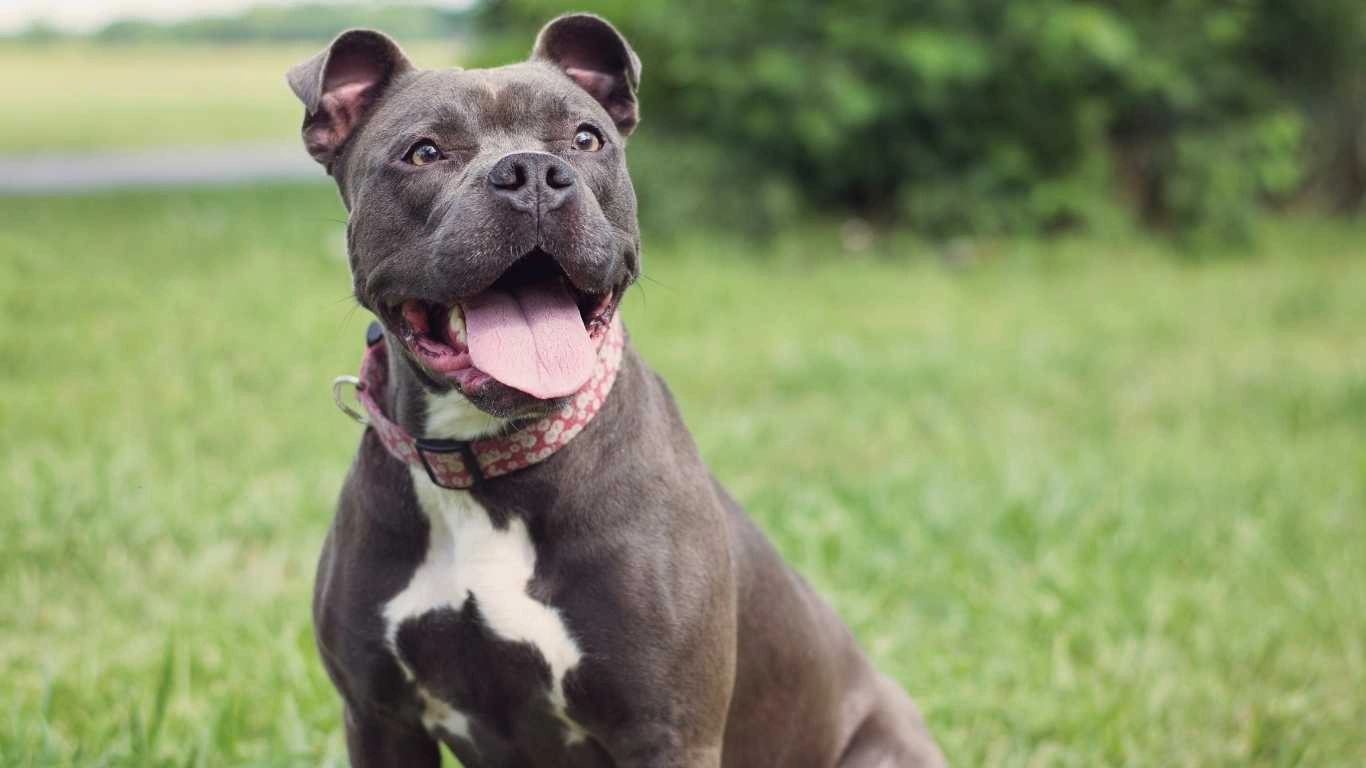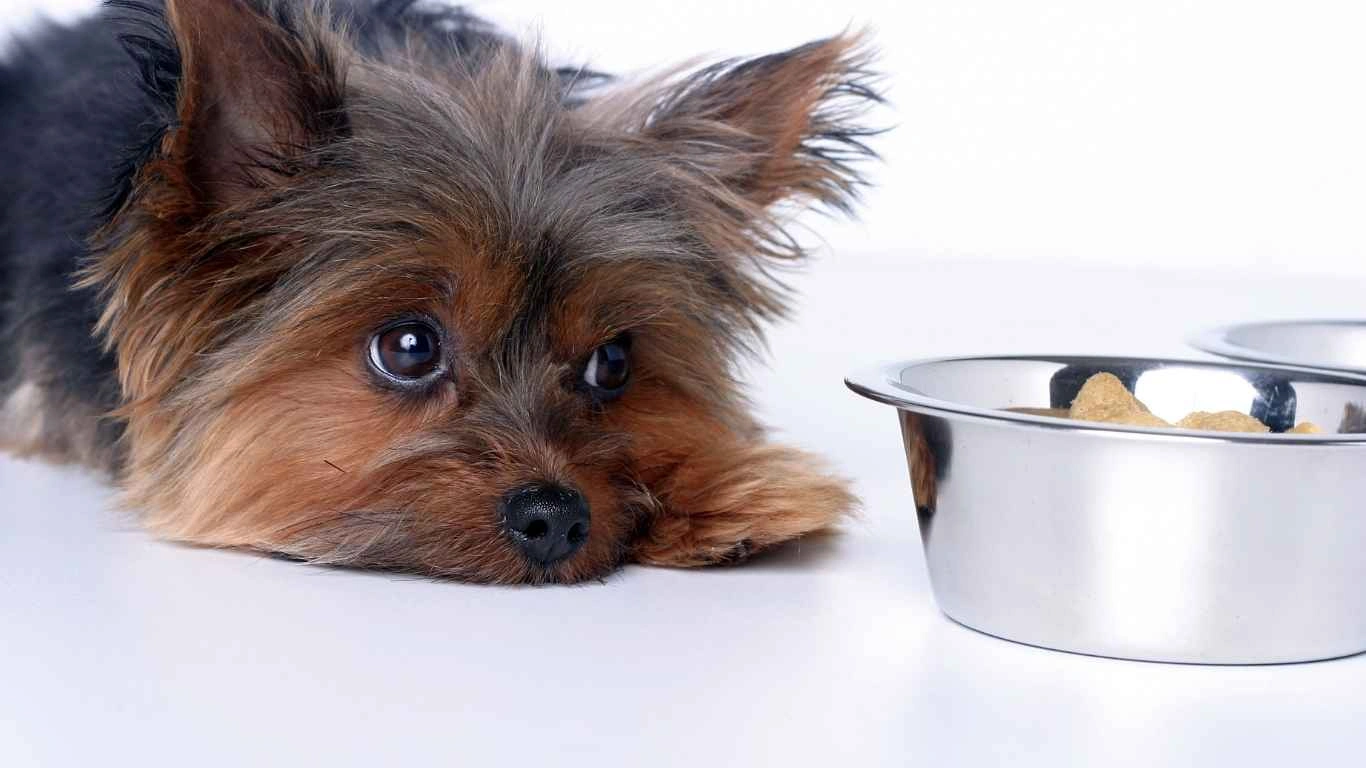Best Diet for Dogs with Frequent UTIs That Actually Works
Ever had a dog that just can’t seem to shake those pesky urinary tract infections? I’ve been there. As someone who’s worked up close with dogs in shelters and pet clinics, I’ve seen my fair share of pups struggling with chronic UTIs. It’s heartbreaking, honestly. The good news? A big piece of the puzzle often lies in what they’re eating. Yep, the best diet for dogs with frequent UTIs can make a huge difference—not just for their bladder health, but for their overall happiness and energy. And trust me, I’ve seen transformations first-hand when pet parents finally cracked the code on nutrition. So, let’s break it down, from one dog-lover to another.
Why Your Dog’s Diet Matters More Than You Think

When I first started working in animal care, I honestly didn’t realize just how much a dog’s diet could impact urinary health. I thought UTIs were just bad luck or a hygiene issue. But after seeing countless dogs improve dramatically after switching diets, I learned otherwise. Diet isn’t just fuel—it’s a form of medicine, especially when it comes to urinary health.
In simple terms, certain foods can help prevent the formation of crystals and bacteria in your dog’s urinary tract. Others? They might just be making things worse. It’s not about gimmicks or super-expensive kibble—it’s about understanding your dog’s individual needs and choosing food that supports their urinary system.
UTIs in Dogs: The Basics
Before we get too deep into diet talk, let’s quickly go over what we’re dealing with. A urinary tract infection in dogs usually involves bacteria entering the bladder, causing inflammation, discomfort, and those annoying (and worrying) symptoms like:
- Frequent urination or attempts to pee
- Whining or straining while peeing
- Blood in the urine (yep, it’s scary-looking)
- Accidents in the house
- Licking around the urinary opening
Some pups get these once in a blue moon. Others seem to live in a loop of infection after infection. That’s where diet starts to matter—big time.
What to Feed a Dog with Recurring UTIs

Focus on Moisture-Rich Foods
If there’s one thing you take away from this, let it be this: hydration is your dog’s best friend. I’ve seen dogs go from miserable to thriving simply by switching from dry kibble to wet food or a fresh, moisture-rich diet. More moisture = more diluted urine = fewer bacteria hanging around to cause problems.
- Canned food – Often contains more water and can be more appealing to picky eaters.
- Raw or fresh-prepared diets – When done right (with guidance from your vet), these can be fantastic for urinary health.
- Homemade meals – I’ve helped several clients cook up simple meals at home that made a real difference. Just make sure they’re nutritionally balanced!
Choose Ingredients That Support Bladder Health
The best diet for dogs with frequent UTIs isn’t just about adding water—it’s also about avoiding problem ingredients and including those that help the urinary system function properly.
- Low ash content: Too much ash (a byproduct of minerals in meat) can lead to urinary crystals, especially in certain dog breeds.
- Low magnesium and phosphorus: These minerals can contribute to struvite crystal formation in some dogs.
- Cranberries: Yep, they work for dogs too! They can help acidify the urine and reduce bacterial growth (bonus: most dogs love the taste in treats).
- DL-Methionine: This amino acid helps acidify urine, making it a little less welcoming for bacteria and crystal formation.
- Probiotics: Healthy gut = better immune system = fewer infections all around, including UTIs.
Back when I worked with a senior Beagle named Luna, she kept getting UTIs every couple of months. Her owner was frustrated (understandably) and ready to throw in the towel. After we switched her to a low-ash, moisture-rich canned food with cranberry extract and probiotics, Luna went a full year without a single infection. A full year! And yes, there were tears. Happy ones.
What to Avoid in Dog Food for UTIs
Just as important as what you feed is what you don’t. Here are a few things I tell every pet parent to look out for on labels:
- Artificial colors and preservatives: These aren’t just unnecessary—they can be inflammatory.
- High-carb fillers like corn and wheat: These don’t add nutritional value and may increase inflammation in some dogs.
- High salt content: Too much sodium can strain the kidneys and cause dehydration.
- Meat by-products: Not all are bad, but they’re inconsistent and can contain high levels of minerals that promote crystal formation.
Don’t worry if you’re feeling overwhelmed. The pet food aisle is intimidating even for those of us in the field. But knowing what to look for—and what to stay away from—can help you take back control.
Tailoring the Diet: One Size Doesn’t Fit All

Every dog is different. What works for my friend’s Shih Tzu might not be great for your Lab. That’s why I always recommend working closely with your vet or a certified pet nutritionist before making big diet changes. In my experience, the best results come from personalized plans—not just guesswork.
Plus, it’s not always about food. Sometimes, underlying issues like bladder stones or hormonal imbalances are part of the bigger picture. A proper diagnosis + smart nutrition = your best shot at breaking the cycle.
And hey—don’t be afraid to ask questions. If your vet isn’t taking your concerns seriously, find one who will. You’re your dog’s best advocate.
Supplements That Can Support Dogs With Frequent UTIs

When you’ve already fine-tuned your dog’s meals and you’re still seeing signs of discomfort, it might be time to look into supportive supplements. I’ve used several in clinic settings, and while they’re not magic pills, the right combo can give your dog’s urinary system that extra bit of help it needs to stay balanced.
Cranberry Extract: Not Just a Trend
You’ve probably heard this one before, but let me tell you—cranberry extract isn’t just marketing fluff. The science backs it up. Cranberries contain compounds that prevent bacteria (like E. coli) from sticking to the bladder wall. It’s kind of like making the bladder too slippery for bad bacteria to hang around.
I’ve recommended cranberry soft chews to dozens of clients, and a lot of them saw improvement within weeks—less frequent urination, no more whining during potty breaks, and way fewer trips to the vet for antibiotics.
Probiotics: Gut Health and Beyond
Here’s something people overlook all the time: your dog’s urinary health is deeply connected to their gut health. Probiotics can keep the entire system more balanced, strengthening immune response and crowding out harmful bacteria before they ever reach the urinary tract.
I usually go for canine-specific probiotic blends with multiple strains—not just the standard lactobacillus. And if you’ve got a picky eater? You can hide powdered versions in their wet food like a stealthy health ninja. Worked like a charm for my old rescue pup, Dottie, who was suspicious of anything “new.”
Glucosamine and Herbs for Bladder Support
Believe it or not, glucosamine isn’t just for joints. It can also help rebuild the bladder lining, which sometimes gets damaged during repeated UTIs. When the lining’s strong, bacteria have a tougher time breaking through and causing trouble.
There are also herbal options—like marshmallow root, uva ursi, and d-mannose—that may help soothe inflammation or block bacteria from binding to the bladder wall. I’m not saying go full herbalist without professional input, but if you work with a holistic vet, these can definitely play a role.
Understanding Breed and Gender Risks

This is something that not enough people talk about: some dogs are just more prone to UTIs based on their breed, gender, or age. And no, it’s not your fault. It’s biology doing its thing.
Female Dogs Are at Higher Risk
In my years working at shelters, the majority of chronic UTI cases came from female dogs. Why? Because their shorter urethras make it easier for bacteria to enter the bladder. Spayed females, especially older ones, can have hormonal imbalances that weaken their urinary tract defenses even more.
One particularly sweet Labrador mix we had, named Bailey, would get UTIs every time the seasons changed. After some bloodwork and a urinalysis, we realized her estrogen levels had dropped off significantly post-spay. With vet guidance, her owner added a natural hormone support and switched her to a custom diet. It didn’t cure her, but it spaced out her infections from every few weeks to once or twice a year. That’s a win in my book.
Breeds With a Genetic Predisposition
Some breeds are more prone to bladder stones or structural urinary tract issues that lead to frequent infections. A few I’ve seen time and again include:
- Miniature Schnauzers
- Dachshunds
- Shih Tzus
- Yorkies
- Bichon Frises
These breeds tend to benefit from special diets that control mineral content. Some even require prescription urinary formulas. So, if you’ve got one of these breeds and your vet mentions diet changes—it’s not just to sell you food. It can be a legit, necessary part of treatment.
Homemade Diets: A Personalized Approach

Now, let’s talk homemade. A lot of dog parents get nervous about this, and I totally get it. It can feel intimidating to ditch commercial food and cook for your pup. But I’ve walked several pet owners through the process, and the results? Incredible.
Basic Guidelines for Homemade UTI-Supporting Meals
If you’re cooking at home, aim for these principles:
- Lean proteins like chicken, turkey, or white fish (avoid too much red meat)
- Moisture-rich veggies like zucchini, carrots, and green beans
- Limited grains – If you use them, go for low-phosphorus options like quinoa or oats
- Broths and bone broths to increase fluid intake and add flavor
- Optional additions: parsley (a natural diuretic), d-mannose powder, a dash of apple cider vinegar for acidity
It’s crucial to supplement with calcium, omega-3s, and a complete multivitamin designed for dogs, especially if the meals are replacing kibble entirely. I’ve seen dogs actually become deficient when meals weren’t balanced, which can cause a whole different set of problems.
Work With a Vet Nutritionist
If you’re going homemade, please, please work with a vet or certified pet nutritionist to make sure it’s balanced. There are even services now that will tailor recipes to your dog’s specific needs and send you shopping lists and prep instructions. I helped a client switch her senior Pomeranian to one of these plans after eight UTIs in one year, and within six months—UTI-free. No antibiotics needed. That’s the power of nutrition.
Don’t Forget the Water Bowl!
Okay, this might sound obvious, but I can’t tell you how many times I’ve seen improvement just by encouraging dogs to drink more water. It’s the simplest thing, and yet one of the most effective. Keeping your dog well-hydrated flushes out bacteria and reduces mineral buildup that can lead to stones or infection.
Tricks to Encourage Drinking
If your dog isn’t naturally into drinking water, here are a few easy hacks I’ve used and shared over the years:
- Add water or low-sodium broth to their meals
- Invest in a pet water fountain—moving water can be more appealing
- Offer ice cubes or frozen broth treats as a “snack”
- Place multiple water bowls throughout the house
One of my clients had a stubborn bulldog named Hank who flat-out refused to drink enough water. Once they added a fountain in the kitchen and another bowl in the bedroom, it was like he suddenly became a hydration expert. Just that little change had a huge impact on his urinary health.
Sample Meal Plans for Dogs With Frequent UTIs

Alright, now that we’ve dug into the “why” and the “what” behind the best diet for dogs with frequent UTIs, let’s get practical. I’ve helped countless pet parents in clinics and shelters build simple, doable meal plans that support urinary health without overcomplicating life. These recipes are built around the key principles we’ve talked about—hydration, balanced minerals, and anti-inflammatory ingredients.
Meal Plan Example: Turkey & Veggie Bowl
- Protein: Ground turkey (cooked, no seasoning)
- Veggies: Steamed zucchini, shredded carrots, spinach
- Grain (optional): Cooked oats or quinoa
- Boosts: 1/4 tsp d-mannose powder, dog-safe cranberry powder, omega-3 oil drizzle
- Moisture: Low-sodium bone broth to mix it all together
This one’s a go-to for dogs that prefer lean meats and aren’t picky about texture. It’s high-moisture, low-ash, and nutrient-dense. I’ve used this base meal with so many shelter pups and always saw improvement in coat quality, energy, and fewer accidents from urinary flare-ups.
Meal Plan Example: Fish & Sweet Potato Mash
- Protein: Whitefish or cod (boneless, cooked)
- Carbs: Mashed sweet potato (rich in antioxidants)
- Veggies: Green beans, kale, a little parsley
- Boosts: Probiotic capsule (opened and mixed in), glucosamine supplement
- Hydration: Add 1/4 cup water or diluted broth
Great for older dogs or those with sensitive stomachs. The sweet potato adds fiber and vitamins, while whitefish is usually well-tolerated. I had a client with a senior Pug named Bubbles who refused everything but fish—this meal plan literally turned her health around.
How to Transition Your Dog’s Diet Safely

Look, I know change can feel risky—especially when your dog’s already been through the ringer with chronic UTIs. But you don’t have to rush into a new diet overnight. In fact, you shouldn’t. A gradual transition is the way to go to avoid digestive issues and resistance from your pup.
The 7-Day Diet Switch Plan
- Day 1-2: 75% current food, 25% new diet
- Day 3-4: 50% current food, 50% new diet
- Day 5-6: 25% current food, 75% new diet
- Day 7: 100% new diet
I always suggest watching stool consistency, energy levels, and hydration during this period. If anything feels off, pause the transition and check in with your vet. No shame in taking it slow.
What If My Dog Refuses the New Food?
Don’t worry—it happens more than you’d think. Some dogs are just food snobs (no judgment—I’ve known a Chihuahua who turned her nose up at duck confit). Here are a few tips I’ve used that help with pickiness:
- Warm the food slightly to bring out aromas
- Top meals with bone broth or low-sodium gravy
- Use food toppers like sardines, plain Greek yogurt, or crumbled treats
- Mix in small amounts of their favorite kibble as a “bridge”
Just remember: this is a long game. Your dog’s body needs time to adjust to a healing diet—and so does their taste palate. Stay consistent, but be flexible.
Tracking Progress and Knowing When to Reassess
Once your dog is on a better diet, don’t just cross your fingers and hope for the best. Track it. Keep a journal—or even use a notes app on your phone—to log symptoms like:
- Frequency and urgency of urination
- Any signs of pain or whining
- Changes in urine smell or color
- Energy levels and appetite
This has helped me and so many pet parents spot patterns that would have otherwise flown under the radar. One client of mine realized her Shepherd’s UTIs always flared up after family barbecues—turns out he was stealing salty leftovers from the trash.
Work With Your Vet for Ongoing Care
A diet change isn’t a cure-all—especially if your dog has underlying conditions like bladder stones, anatomical abnormalities, or endocrine disorders. That’s why a collaborative relationship with your vet is everything. Bring your logs. Ask questions. Don’t settle for generic answers if your gut says something’s off.
For chronic or complicated cases, I recommend talking to a veterinary internal medicine specialist or a certified canine nutritionist. Many of them are available via telehealth these days, which makes it easier than ever to get expert advice tailored to your pup.
Final Thoughts on Diet and UTI Management
There’s no doubt about it—the best diet for dogs with frequent UTIs isn’t just a one-size-fits-all fix. It’s a layered approach. Hydration, clean ingredients, the right supplements, and consistent monitoring all play a role.
From my hands-on experience working with all kinds of pups—from nervous rescues to spoiled lapdogs—food has always been a powerful starting point for healing. You don’t have to be a pro to make smart choices. Trust your instincts, do the research, and don’t be afraid to ask for help along the way.
References
Disclaimer
This article is based on personal experience in animal care and current veterinary nutrition knowledge. It is not intended to replace professional veterinary advice. Always consult your veterinarian before making significant changes to your dog’s diet or health regimen.






